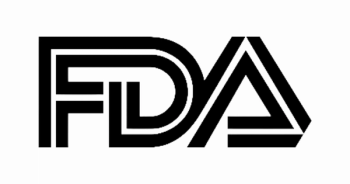
Targeted Therapies in Oncology
- April I 2025
- Volume 14
- Issue 5
- Pages: 44
Exploring New Approaches for ESR1 Mutations in Recent Trials and Future Directions
Rapid breast cancer research offers new hope, as discussed by Joyce O’Shaughnessy, MD, regarding HR+/HER2– and HER2+ disease.
Research continues to evolve at a rapid pace for breast cancer, with clinical trials and novel therapeutic agents offering new hope for patients. Recent findings from the
O’Shaughnessy, the Celebrating Women Chair in Breast Cancer Research, Baylor University Medical Center, director, Breast Cancer Research Program, Texas Oncology, US Oncology, in Dallas, Texas, addressed the progress being made in treating hormone receptor (HR)–positive, HER2-negative, and HER2-positive breast cancer as well as the challenges and opportunities that lie ahead.
EMBER-3 Trial
The EMBER-3 trial1 has emerged as a pivotal study in the treatment of HR-positive, HER2-negative breast cancer, particularly for patients who have developed resistance to endocrine therapy. The trial evaluated the efficacy of imlunestrant, an oral selective estrogen receptor degrader (SERD), compared with fulvestrant (Faslodex) in patients who had previously been treated with CDK4/6 inhibitors and aromatase inhibitors.
One of the key findings from the trial was the superior performance of imlunestrant in patients with ESR1 mutations, which are commonly associated with resistance to traditional endocrine therapies. The agent demonstrated enhanced efficacy in degrading the mutant estrogen receptor, offering a promising therapeutic option for this subset of patients. In patients without the ESR1 mutation, imlunestrant showed comparable efficacy to fulvestrant, suggesting it is a viable alternative across the board.
In the trial, patients were randomly assigned 1:1:1 to receive either imlunestrant, standard endocrine monotherapy, or the combination of imlunestrant and abemaciclib (Verzenio). The primary end points were investigator-assessed progression-free survival (PFS), comparing imlunestrant with standard therapy in patients with ESR1 mutations and in the overall population, as well as comparing the combination therapy with imlunestrant monotherapy among all patients who had undergone random assignment concurrently.
Among 256 patients with ESR1 mutations, the median PFS was 5.5 months with imlunestrant compared with 3.8 months with standard therapy. The estimated restricted mean survival time at 19.4 months was 7.9 months (95% CI, 6.8-9.1) with imlunestrant and 5.4 months (95% CI, 4.6-6.2) with standard therapy (difference, 2.5 months; 95% CI, 1.2-3.9; P = .001).
In the overall population, the median PFS was 5.6 months with imlunestrant and 5.5 months with standard therapy (hazard ratio for progression or death, 0.87; 95% CI, 0.72-1.04; P = .12). Among 426 patients in the comparison arm of the combination vs imlunestrant alone, the median PFS was 9.4 months and 5.5 months, respectively (hazard ratio, 0.57; 95% CI, 0.44-0.73; P = .001).
Perhaps even more compelling was the combination of imlunestrant with the CDK4/6 inhibitor abemaciclib. This combination showed significant improvements in PFS across all patient groups, including those with prior CDK4/6 inhibitor exposure.
“The median PFS of 9.1 months in this heavily pretreated population is particularly noteworthy, underscoring the potential of this combination to become a new standard of care,” O’Shaughnessy said. She is also cochair of the upcoming 24th Annual International Congress on the Future of Breast Cancer® East, sponsored by Physicians’ Education Resource®, to be held July 11 to 12, 2025, in New York, New York.
The next drug development steps for imlunestrant include seeking FDA approval for monotherapy or for use in combination therapies. Additionally, the EMBER-4 trial (NCT05514054) is already underway. “Drug development is progressing quickly, with the possibility of the agent’s use in a curative setting,” O’Shaughnessy said.
ADCs Expand the HER2 Landscape
ADCs have revolutionized the treatment of HER2-positive breast cancer, and their versatility is now being explored in HER2-low disease and other subtypes. An ADC that shows promise is
A phase 2 trial (NCT06224673) is evaluating the agent in patients with HER2-low, locally advanced unresectable or metastatic breast cancer.2 Primary objectives are to determine the efficacy of ARX788 using duration of response, best overall response, and disease control rate.2
Similar to other ADCs, ARX788 is not without its challenges. Interstitial lung disease and ocular toxicity are notable adverse events (AEs), though the latter appears to be manageable with standard interventions. “The development plan for ARX788 is still being finalized, but its non–cross-resistant profile makes it a potential addition to the ADC arsenal,” O’Shaughnessy said.
A second-generation ADC,
Managing ADC Toxicities: A Collaborative Approach
The ocular toxicities associated with ADCs, such as dry eye and stomatitis, require a proactive and collaborative approach to management. Oncologists are advised to prescribe preventive measures, such as over-the-counter moisturizing eye drops, and to consider dose reductions if necessary. In cases of severe toxicity, referral to an ophthalmologist is recommended.
The recent approval of datopotamab deruxtecan (Dato-DXd), a TROP2-directed ADC, has further emphasized the importance of managing these AEs.7 The agent was approved based on efficacy findings from the
Upcoming Trials and Data Releases
Staying informed about the latest data and its practical applications is crucial. The upcoming 24th Annual International Congress on the Future of Breast Cancer East and West meetings will provide a comprehensive overview of the most significant developments over the past year. Key topics will include the integration of CDK4/6 inhibitors into HER2-positive breast cancer treatment, as demonstrated by the
The next 6 to 8 months are poised to deliver several practice-changing trial results. Among the most anticipated is the
Another critical trial is the DESTINY-Breast09 trial (NCT04784715), comparing first-line T-DXd to the standard combination of taxane, trastuzumab, and pertuzumab (Perjeta) in HER2-positive breast cancer. “This study has the potential to redefine first-line treatment for this population,” O’Shaughnessy said.
In the HR-positive space, the
On the immunotherapy front, O’Shaughnessy is looking forward to findings from the SWOG S1418/KEYNOTE-242 trial (NCT02954874), which is investigating the use of pembrolizumab in patients with residual disease after neoadjuvant chemotherapy. The landscape of breast cancer treatment is undergoing a transformative shift. The future of breast cancer care is bright, and the coming months promise to deliver even more groundbreaking insights.










































